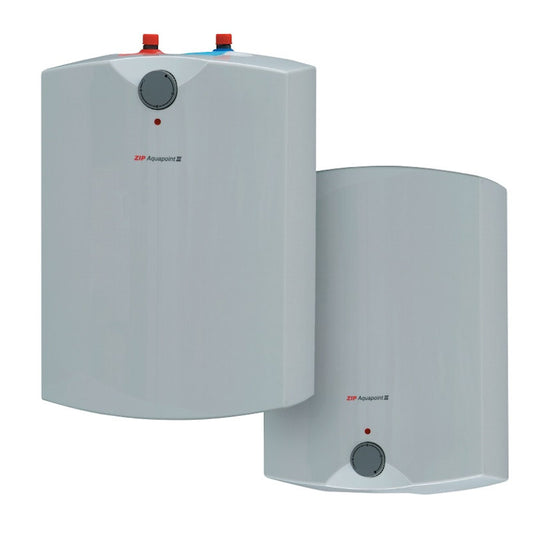Unvented water heaters, also known as unvented hot water cylinders, are a modern alternative to traditional vented systems. The key distinction is that they are sealed units that draw cold water directly from the mains supply, rather than relying on a separate cold water storage tank in the loft. This direct connection to the mains water pressure is the source of their primary benefits.
The categories of unvented water heaters are primarily defined by their heating method and physical design.
1. Direct Unvented Water Heaters
These cylinders heat the water internally using electric immersion heaters. They are a self-contained system for producing hot water, making them suitable for properties where a boiler or other external heat source is not available or desired.
- Key Features:
- Internal Heating: Equipped with one or more electric immersion heaters. Some models have two—a primary one at the bottom for off-peak economy tariffs (like Economy 7) and a "boost" heater midway up for quick hot water on demand.
- Simplicity: The setup is relatively straightforward, as it doesn't require a connection to a central heating boiler.
- Application: Ideal for small-to-medium-sized homes, apartments, or commercial properties that do not have a central heating system or as a backup hot water source.
2. Indirect Unvented Water Heaters
These units rely on an external heat source to heat the water inside the cylinder. The external heat source, such as a gas or oil boiler, a heat pump, or a solar thermal system, circulates hot water through a coil inside the cylinder, transferring heat to the domestic water without mixing the two.
- Key Features:
- External Heat Source: Requires a connection to a boiler or other heating system.
- Dual Coils (for some models): Some cylinders have two heating coils, allowing them to be connected to multiple heat sources, such as a boiler and solar panels, for maximum energy efficiency.
- Efficiency: The efficiency of the system is directly linked to the efficiency of the external heat source (e.g., a modern condensing boiler or a heat pump).
- Application: Best for homes with a central heating system, as it's an efficient way to provide high-pressure hot water throughout the property.
3. Slimline and Horizontal Cylinders
These categories are based on the physical design of the cylinder, offering a solution for properties with space limitations.
- Slimline Cylinders: These have a reduced diameter compared to a standard cylinder, making them ideal for installation in narrow airing cupboards or other tight spaces.
- Horizontal Cylinders: Designed to be installed on their side, typically in a loft space or a low-height area, for situations where vertical space is not available.
4. Integrated and Safety Features
All unvented systems, regardless of their heating method or physical design, are sealed and operate under mains pressure. For this reason, they include several crucial safety components to manage pressure and prevent overheating. These are not so much a separate category but a defining characteristic that sets unvented systems apart:
- Expansion Vessel: Accommodates the expansion of water as it heats up, preventing pressure from building to dangerous levels.
- Pressure-Reducing Valve: Limits the incoming mains pressure to a safe operating level for the cylinder and the home's plumbing.
- Temperature and Pressure Relief Valve: A critical safety device that automatically discharges water if the pressure or temperature inside the cylinder exceeds a safe limit.
The primary advantage of unvented water heaters is their ability to deliver hot water at a high flow rate and consistent mains pressure to all taps and showers, improving the performance of the entire home's hot water system.






